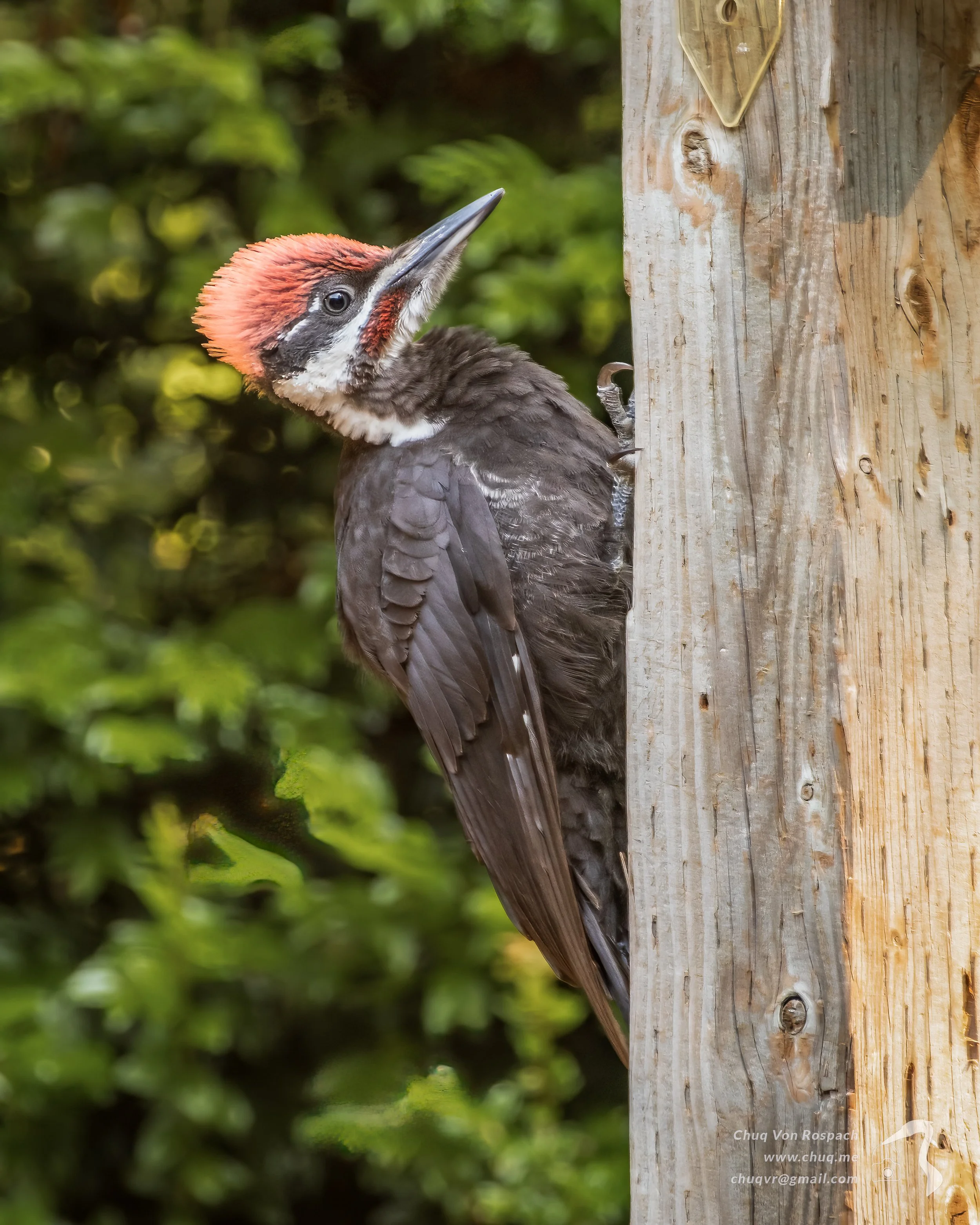Feederwatching
[Aug 4 update: song sparrow checks in with an unaccompanied immature visiting the deck feeder this morning.
This makes for thirteen species confirmed as successful nesting here this year, and I think there are still a couple more (chestnut-backed chickadee, Pacific-Slope Flycatcher and Swainson’s Thrush are still on my “likely breeding but hiding well” list — chuq
August 3 update: one more species checked in: I had a spotted towhee arrive with two begging chicks in tow, and realized they were bigger than the parent, because they are Brown-Headed Cowbirds. Mixed feelings on this one, but the parent (probably mom) seemed to be doing okay despite the demands.
July 30 update: three more species have checked in with fledges showing up at the feeder or where I could get a good view of them: Pine Siskin and Black-Capped Chickadee. Red-breasted Nuthatch actually checked in a few days ago and I forgot to add them to the list.
July 29 update: American Goldfinch checks in with a chick at the feeder this morning begging.
July 25 update: two more species have checked in by bringing fledges to the feeders — Black-Headed Grosbeaks and Red-Breasted Nuthatch. ]
I continue to enjoy watching the birds at the feeder and taking pictures, but I’ve been slow getting the images processed and ready to show; I’ve finally done a big catch up, and it includes the first images out of the new Sony setup.
We had a bunch of interesting birds move in for the spring and summer, including Western Tanagers and Black-headed Grosbeaks. Some species left at the end of winter, including our Fox Sparrows and White-Throated, as well as the Varied Thrushes, which it turns out have completely different dietary patterns across seasons, being insect eaters in warmer months and switching to seed when the bugs are scarce. One fun addition has been hearing great horned owls pretty regularly, and on two occasions, getting good looks at one, in both cases on a branch watching my feeders. We did have an “event” which Laurie only caught the very end of it where there was a commotion around her feeders and she went out to find clumps of feathers on the deck, from what we think was one of the band-tailed pigeons (which have been kinda scarce since here). Given the size of those pigeons we believe it was taken by the owl, because the other possible candidates would be Cooper’s Hawk, which is too small to win a fight with a pigeon (or perhaps more correctly carry it off), and red-tailed hawk, which is more rodent oriented and something we only rarely see here.
The bird song here on the property is amazing, with the primary songs we hear all the time being the Robins and the Swainson’s Thrushes. Also, of course, the ubiquitous bellowing of the red-breasted nuthatches. We have a very diverse and thriving bird population here, where on days when I do surveys, 17-18 species is a common number to see. Most numerous are the Dark-eyed Juncos, of course.
The birds here have had a very successful breeding season; we have many baby juncos (probably two rounds of nesting), and a bunch of new Spotted Towhees. The Pileated Woodpeckers brought the kid to the feeders to teach it how to use them. We’ve seen a number of baby Robins (and a picture below), and also a fledged Purple Finch. We assume breeding success with both chickadees (chestnut-backed and black-capped) and the nuthatches, but haven’t seen explicit behaviors or the chicks themselves. The same is true of the Song Sparrows and Pine Siskens and Tanagers. It’s unclear if the Grosbeaks nested here or moved in after nesting, and we have just seen Evening Grosbeaks and Stellar’s Jays for the fist time since May, and in both cases, they have checked in here after finishing nesting. We’ve also just seen our first Downy woodpeckers in months, and those are probably birds that left their breeding area and moved in.
So yeah, having 8 or more species breeding succesfully on the property makes me happy. I’m now curious how this population will shift as migrations start and we head into fall, but when I’m stuck in the office, having this group out there to watch and study really makes the day a lot better..






























